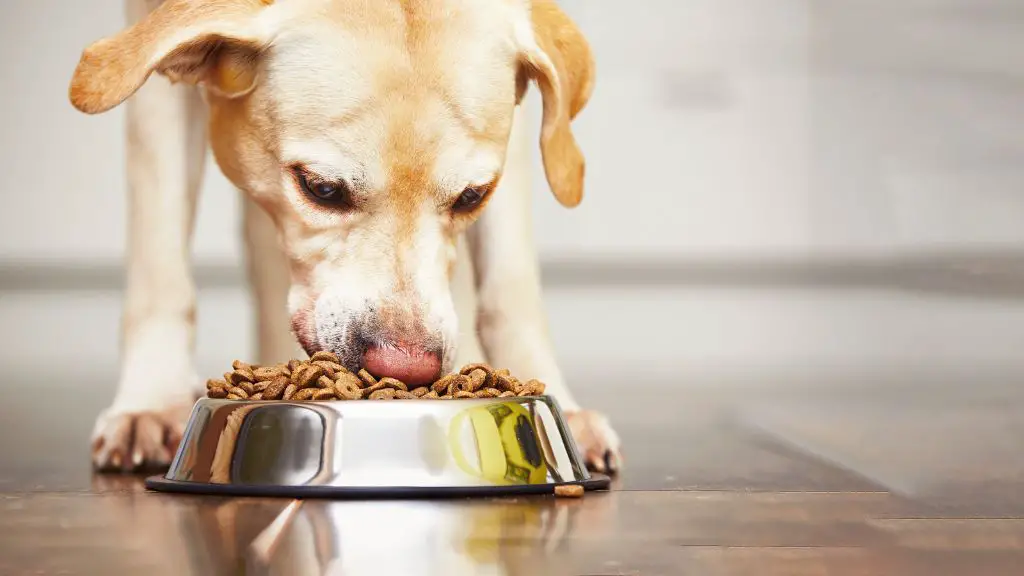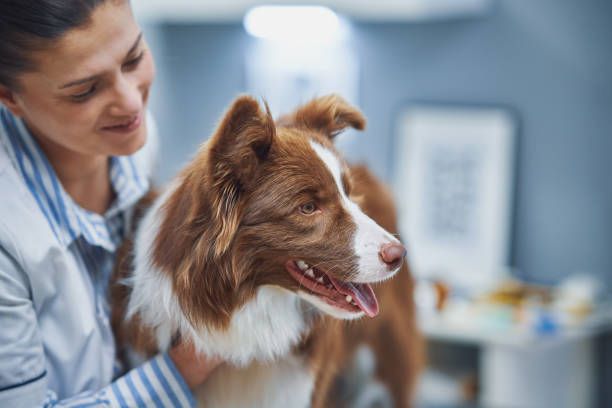Introduction
In recent years, grain free dog foods have surged in popularity. Many dog owners have switched their pets to grain free diets, believing them to be healthier. This stems largely from the rise of gluten free and paleo diets in human nutrition. Just like with people, there’s a perception that avoiding grains is somehow healthier for dogs.
The grain free dog food trend took off in 2007 when several boutique brands emerged offering grain free recipes. These brands marketed their foods as being similar to a dog’s natural ancestral diet and free of allergenic ingredients like corn, wheat and soy. Many pet owners bought into the marketing claims and jumped on the grain free bandwagon.
However, despite the hype around grain free dog food, there are times when it may be appropriate to transition your dog back to a diet containing grains. There are pros and cons to both types of dog food, so it’s worth understanding them before deciding which is right for your pup.
Pros and cons of grain free dog food
Grain free dog food has become increasingly popular in recent years, with many pet owners believing it is a healthier option for their canine companions. Some perceived benefits of grain free diets include:
- May help dogs with food allergies or sensitivities, since it removes grains like corn, wheat, and soy which are common allergens.
- May improve digestive issues like gas, bloating or loose stools since grains can be difficult for some dogs to digest.
- Often has more animal protein as the first ingredient compared to grain inclusive foods.
- May result in a shinier coat or reduction in ear infections according to some pet owners.
However, there is a lack of scientific evidence that grain free diets are healthier for dogs when compared to high-quality grain inclusive foods. Despite marketing claims, most veterinary nutritionists agree there are no proven benefits to feeding grain free:
- Grains are highly digestible for dogs and provide carbohydrates for energy.
- Unless your dog has a diagnosed food allergy, they likely tolerate grains without issue.
- There is no evidence that grain free reduces ear infections, dull coats, or other health problems when controlling for other factors.
- Dogs fed grain free are at increased risk for canine heart disease according to the FDA.
Pros and cons of grain inclusive dog food
Grain inclusive dog foods can provide more balanced nutrition for many dogs. Whole grains like brown rice, oatmeal, and barley contain fiber, vitamins, and minerals that support overall health. The carbohydrates in grains also provide dogs with energy. However, some dogs are allergic to certain grains like wheat or corn and will experience symptoms like itchy skin, ear infections, and digestive issues. Each dog is different in terms of grain tolerance.
Signs your dog may benefit from grain inclusive
If your dog has been doing well on a grain free diet with no noticeable issues, there may not be an urgent need to transition them to a grain inclusive food. However, some signs your dog may benefit from the addition of grains in their diet include:

– No proven allergies or sensitivities to grains. If your dog has been tested for food allergies and grains are not one of the triggers, they may tolerate grains just fine. Many dogs do well on grain inclusive diets. An elimination diet trial can help confirm.
– Difficulty maintaining weight. Some dogs struggle to maintain a healthy weight on a grain free diet. The additional carbohydrates and calories from grains can help support a lean dog’s body condition.
– Lack of energy or stamina. Grains provide an excellent source of complex carbohydrates for sustained energy. A grain inclusive diet may help give your dog an energy boost.
– Digestive issues. While grains are one potential cause of digestive upset, they also provide dietary fiber that can aid healthy digestion in some dogs. It’s worth trying under veterinary supervision.
– Skin or coat problems. Again, while grains can trigger allergies in some dogs, they provide nutrients that can improve skin and coat health for other dogs. A trial may be warranted.
How to transition your dog to grain inclusive
When transitioning your dog from a grain free to a grain inclusive diet, it’s important to do so slowly over a period of weeks. This gives your dog’s digestive system time to adjust to the new sources of carbohydrates and fiber.
Start by mixing a small amount of the new grain inclusive food in with your dog’s regular grain free food. The new food should make up around 25% of the total. Gradually increase the ratio of new to old food over 2-4 weeks until your dog is eating 100% grain inclusive.
Go slowly and wait a few days between each increase to monitor for any digestive upset like loose stool, vomiting, or lack of appetite. If your dog experiences any issues, you may need to slow the transition down further. The key is gradual change over an extended timeframe.
Watch your dog closely during this transition period. Their poops should remain normal. If the stools become loose, go back to the previous ratio for a few more days before increasing the new food again. With patience and close observation, you can successfully switch your dog to a grain inclusive diet.
Tips for choosing a quality grain inclusive food
When selecting a new grain inclusive dog food, look for these signs of quality:
Whole grains as first ingredients – Whole grains like brown rice, oatmeal, and barley should be at the top of the ingredients list. Avoid foods listing “grain fractions” like brewers rice. Whole grains are more nutritious.
Quality meat protein sources – Meat proteins like chicken, lamb, turkey, salmon should be specific rather than vague terms like “poultry meal.” Meats should be fresh or preserved naturally without artificial preservatives.

Avoid unnecessary fillers – Steer clear of fillers like corn, soy, wheat, artificial colors and flavors. Your dog doesn’t need these.
Choosing a grain inclusive food with quality whole grains, meat proteins and without artificial fillers will give your dog balanced nutrition. Check with your vet if you are unsure about a specific brand or recipe.
Monitor your dog closely when switching
It’s important to monitor your dog closely when transitioning from a grain-free to a grain-inclusive diet. This is because some dogs may develop allergies or digestive issues when introduced to new grains.
Keep an eye out for signs of food allergies such as itchiness, hair loss, hot spots, ear infections, and skin irritations. Gastrointestinal issues like vomiting, diarrhea, gas, and abdominal pain can also indicate an intolerance to the new food.
If you notice any abnormalities after switching your dog’s diet, consult your veterinarian. They can help you determine if your dog is having an adverse reaction to the grains or if something else may be causing the symptoms.
It’s generally recommended to transition your dog slowly over 5-7 days when introducing new foods. This gives their digestive system time to adjust. But even with a gradual switch, some dogs still react poorly. Don’t hesitate to contact your vet if your dog experiences any setbacks on the new grain-inclusive diet.
Some dogs may still do better on grain free
While many dogs do well on grain inclusive diets, some dogs may still benefit from sticking with a grain free diet. This includes:
Dogs with proven grain allergies/sensitivities

If your dog has been tested and confirmed to have an allergy or sensitivity to grains like corn, wheat, soy, etc., then they should remain on a grain free diet to avoid triggering those allergies. Work closely with your vet to identify the specific grains your dog is allergic to so you can find an appropriate grain free food.
Certain breeds prone to issues
Some breeds are more prone to grain sensitivities and issues processing grains, like German Shepherds and Irish Setters. These breeds may do better sticking to a grain free diet. Look at your dog’s breed predispositions when considering a diet change.
While grain free diets are not necessary for all dogs, they can still be beneficial for dogs with grain allergies or breeds prone to grain issues. Consult your vet to determine if your individual dog may do better remaining on a grain free diet.
Grain free is not always healthier
Grain-free dog foods have seen a surge in popularity in recent years, with many pet owners believing they are inherently healthier than grain-inclusive foods. However, this is not always the case. Grains like rice, oats and barley can provide important nutrients like B vitamins, vitamin E, iron and fiber. When choosing a quality brand that uses nutritionally balanced recipes, both grain-free and grain-inclusive foods can offer complete and balanced nutrition.
There is also no evidence that eating a grain-free diet will extend a dog’s lifespan or provide major health advantages for most dogs. The exceptions are dogs that have true grain allergies or sensitivities. For those dogs, a grain-free diet may help minimize allergic reactions. But for dogs that tolerate grains, a high-quality grain-inclusive food can be just as healthy.
The most important factors are picking a brand that rigorously tests for quality and safety, and choosing a recipe tailored to your dog’s life stage and activity level. Be cautious of brands that make unfounded claims about grain-free diets, as grains can be nutritious when used properly. Talk to your vet for personalized diet advice.
Talk to your vet before switching
Before making any major changes to your dog’s diet, it’s important to consult your veterinarian. Your vet knows your dog’s unique health history and can provide tailored guidance on whether switching to a grain-inclusive food is advisable.

Some key things to discuss with your vet:
- Any food allergies or sensitivities your dog has experienced in the past
- Your dog’s overall health status
- Specific ingredients your dog may benefit from or should avoid
- An appropriate transition schedule to smoothly switch foods
Following your veterinarian’s recommendations can help make the transition process easy on your dog’s digestive system. Your vet may advise mixing the old and new foods together over a period of 5-7 days or longer, gradually adjusting ratios until your dog is eating just the new food.
With your vet’s guidance, you can ensure any dietary changes keep your dog happy, healthy, and thriving for years to come.